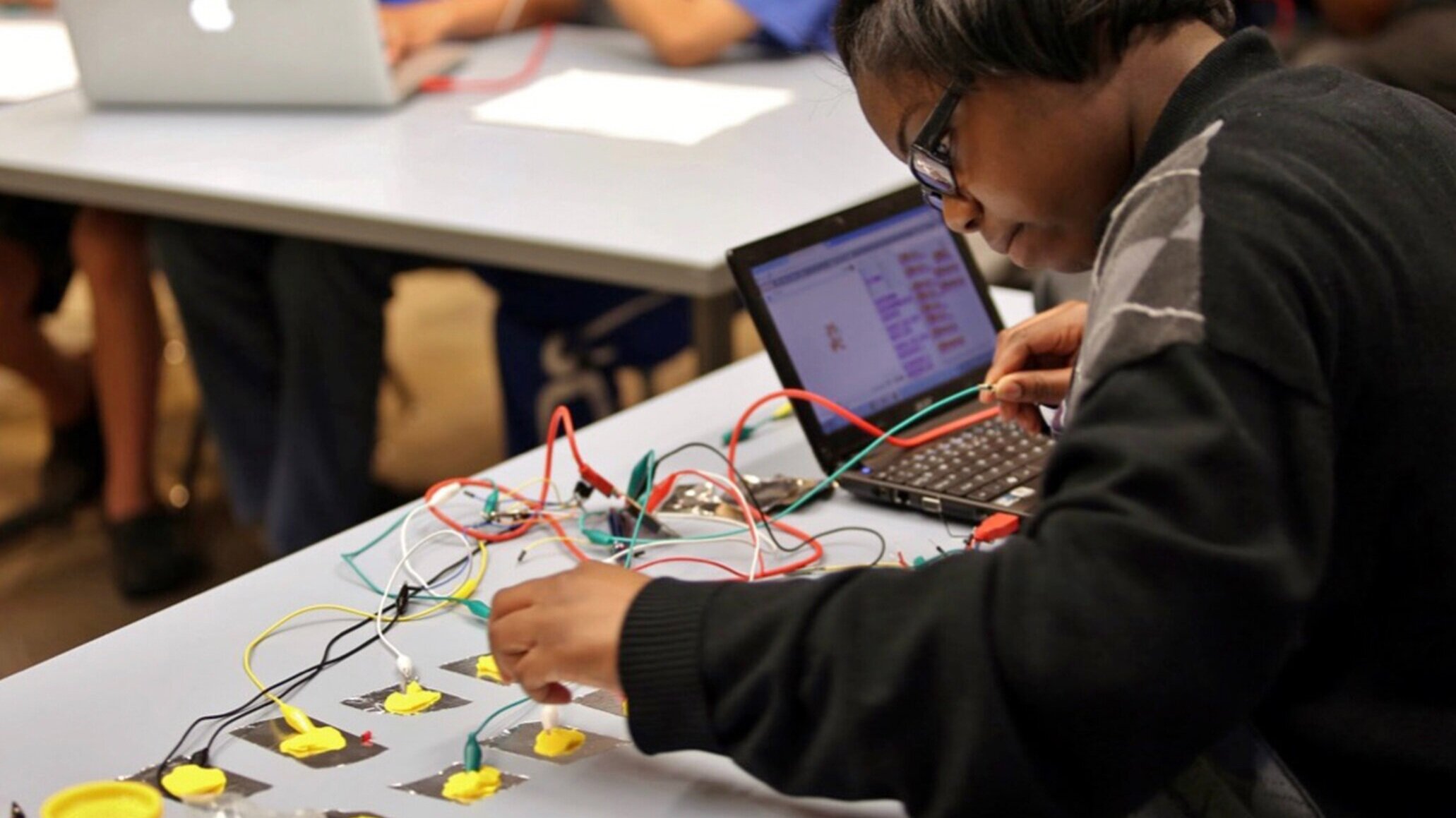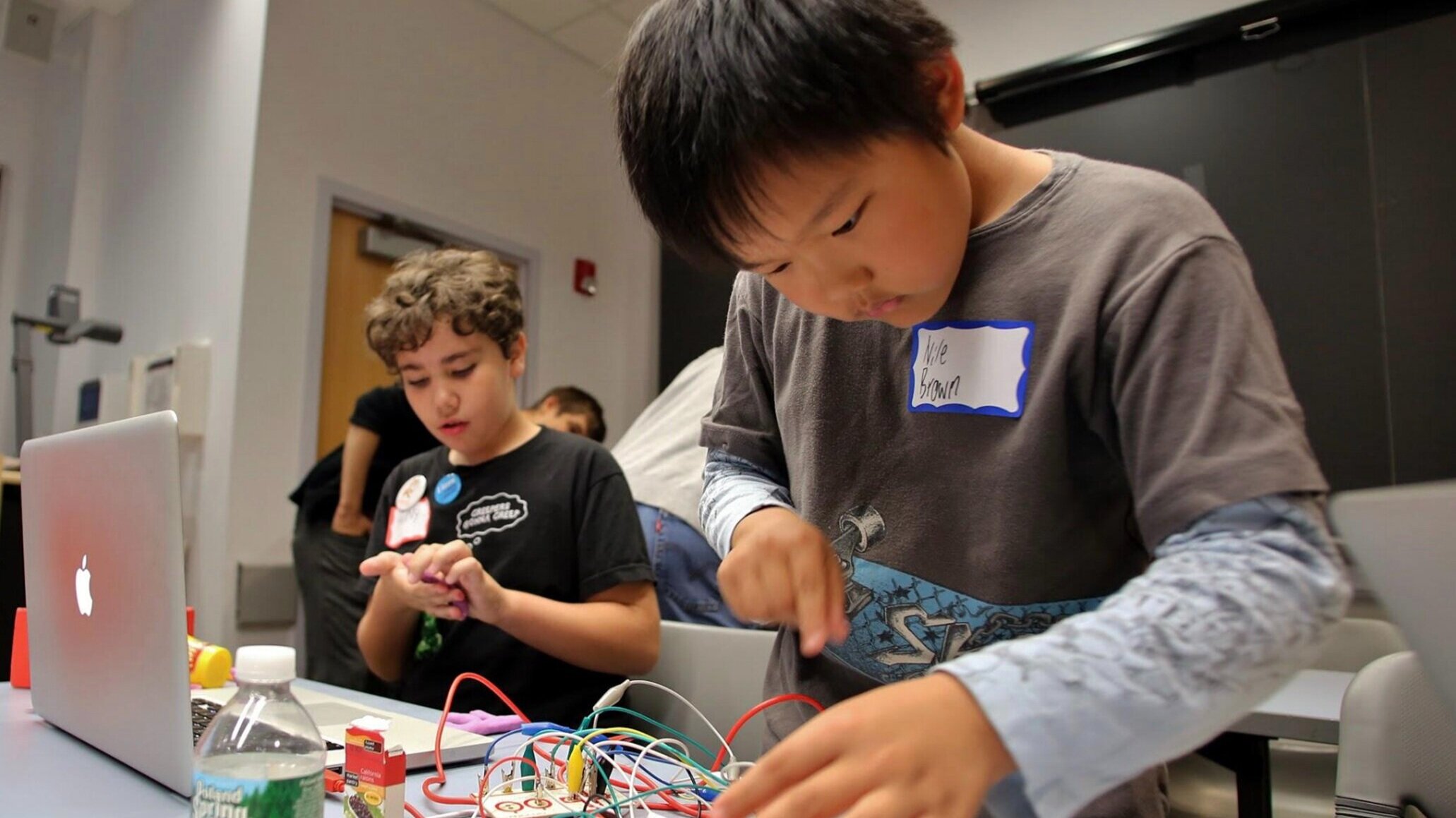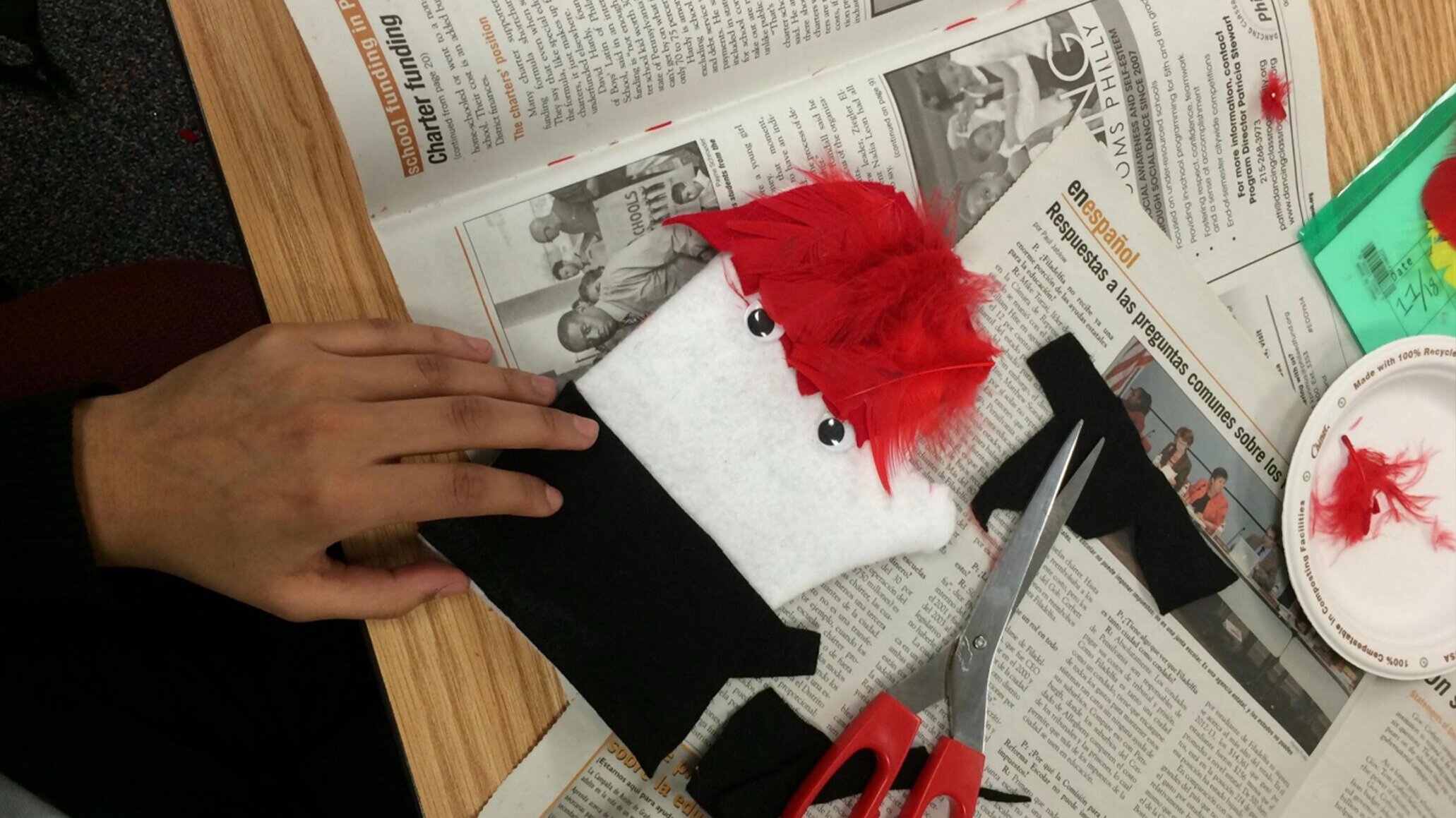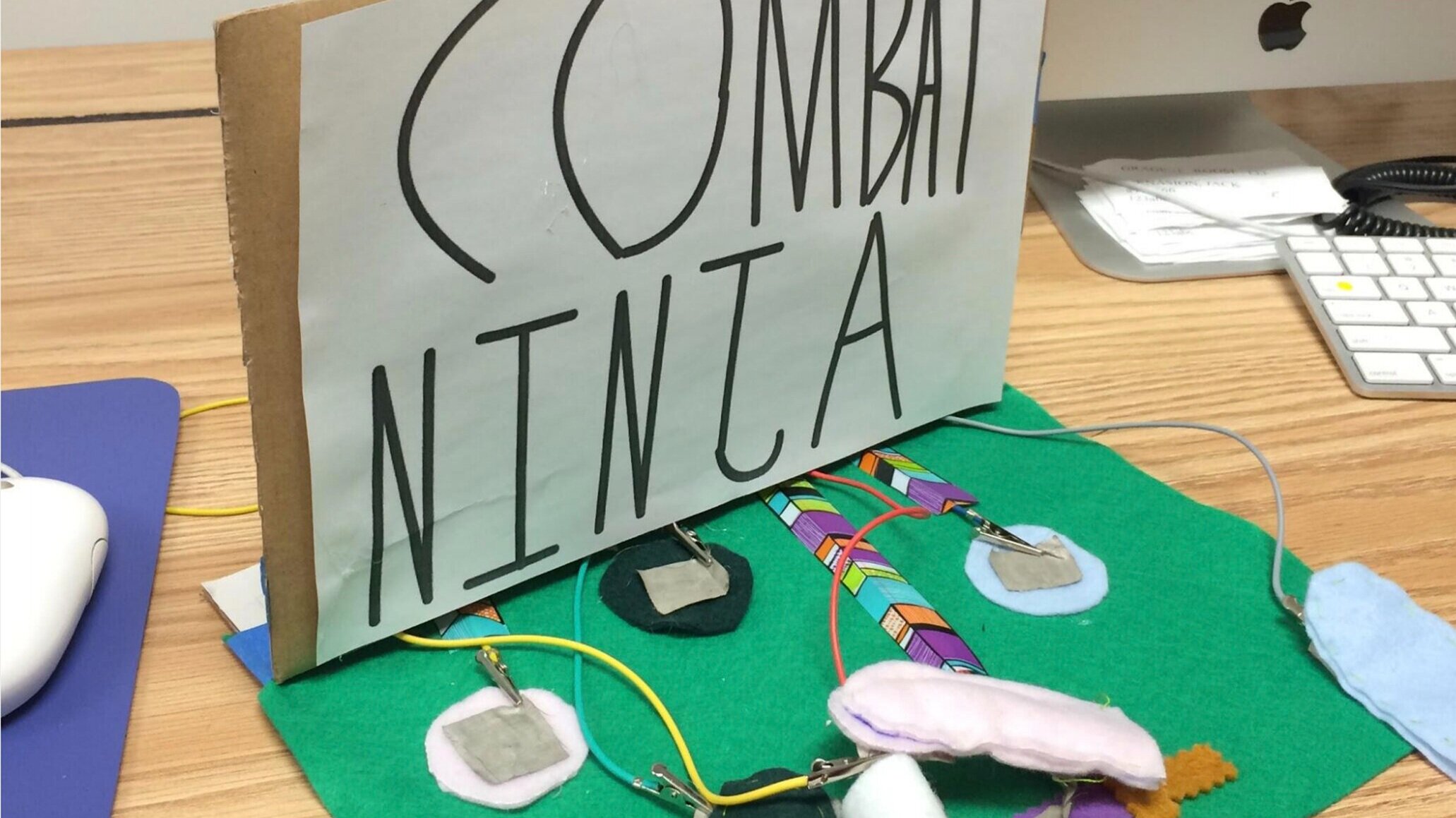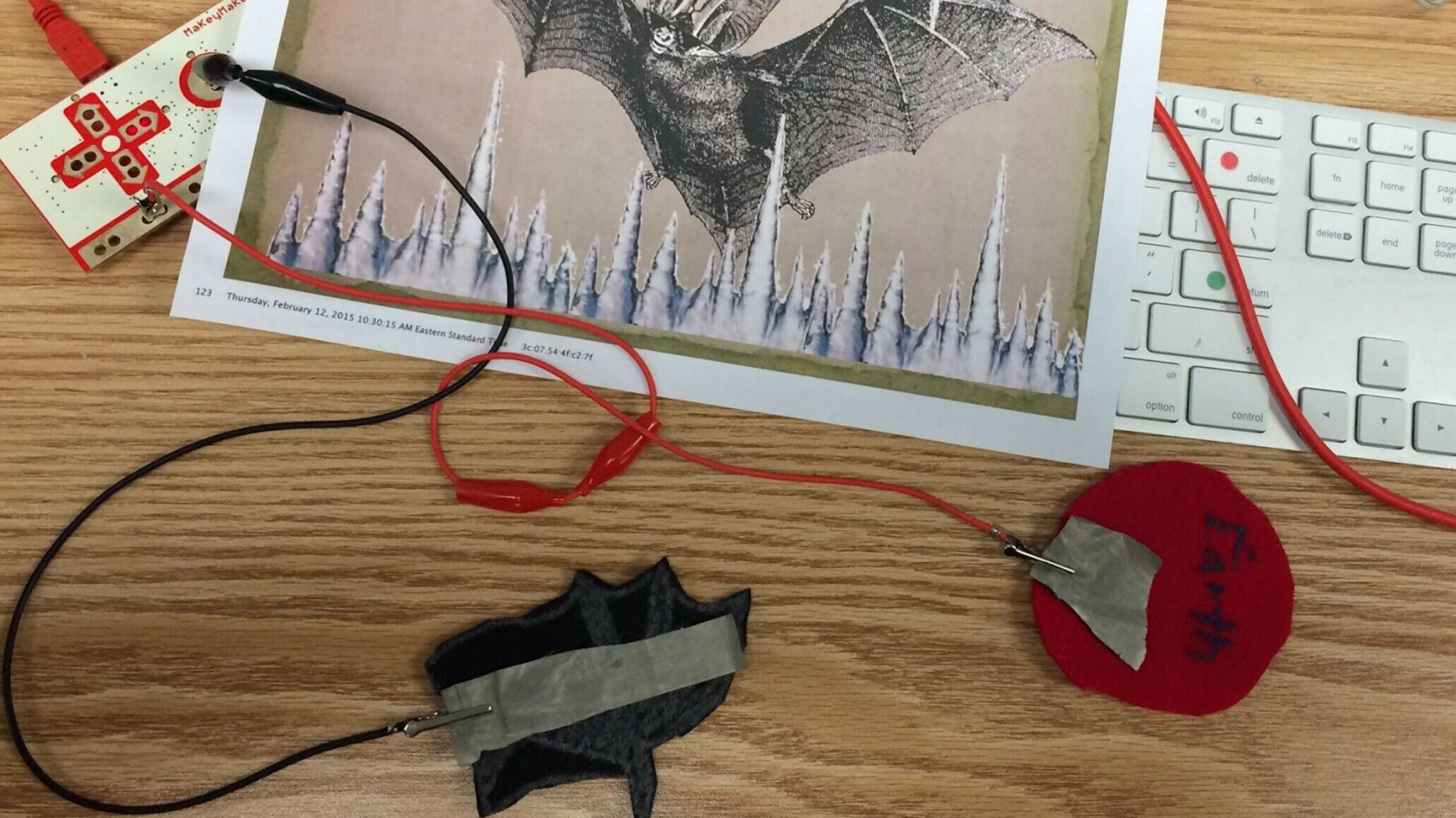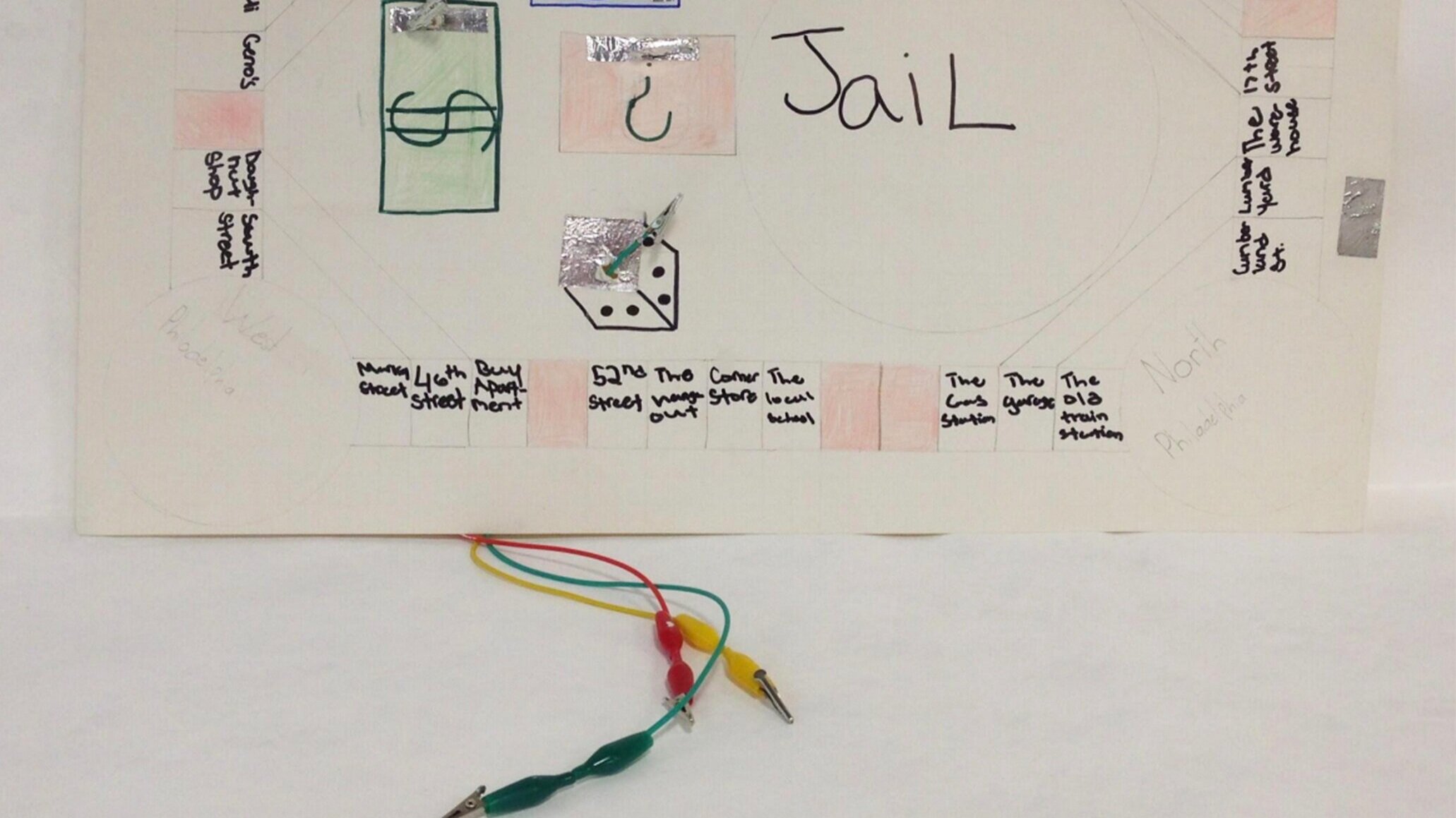Make Code Play
In MAKE CODE PLAY we describe projects that expand game design beyond the screen. The projects range in difficulty level from starter to intermediate. Some projects are collaborative, while in others, students make their own interfaces, controllers and game designs. We have piloted these projects with over a hundred elementary, middle, and high school students and their teachers. Materials for the projects are commonly found in classrooms, schools, or homes. The programming tool, Scratch, is freely available online while the microcontroller, MaKey MaKey, can be purchased and reused for the projects. The guide of the Make Code Play, which can be downloaded here: PDF PowerPoint.
Contributors
Veena Vasudevan, Sari Widman
Related Research
Kafai, Y. B. & Burke, Q. (2017). Connected Gaming: What Making Video Games Can Teach Us About Learning and Literacy. Cambridge, MA: MIT Press.
Kafai, Y. B. & Vausdevan, V. (2015, November). Constructionist Gaming Beyond the Screen: Middle School Students’ Crafting and Computing of Touchpads, Board Games, and Controllers. In Proceedings of the 10th Workshop in Primary and Secondary Computing Education (WiPSCE '15) (pp. 49-54). New York, NY: Association for Computing Machinery. Link to PDF
Kafai, Y. B. & Burke, Q. (2015). Constructionist Gaming: Understanding the Benefits of Making Games for Learning. Educational Psychologist, 50(4), 313-334. Link to free access
Kafai, Y. B. & Vasudevean, V. (2015, June). Hi-Lo Tech Games: Crafting, Coding and Collaboration of Augmented Board Games by High School Youth. In Proceedings of the 14th International Conference on Interaction Design and Children (IDC '15) (pp. 130-139). New York, NY: Association for Computing Machinery. Link to PDF
Vasudevan, V., Kafai, Y. B. & Yang, L. (2015, June). Make, Wear, Play: Remix Designs of Wearable Controllers for Scratch Games by Middle School Youth. In Proceedings of the 14th International Conference on Interaction Design and Children (IDC '15) pp. 339-342). New York, NY: Association for Computing Machinery. Link to PDF
Lee, E., Kafai, Y.B. Davis, R.L. & Vasudevan, V. (2014). Playing in the arcade: Designing tangible interfaces with MaKey MaKey for Scratch games. In A. Nijholt (Ed.), Playful User Interfaces: Interfaces that invite social and physical interaction (pp. 277 - 292). Singapore: Springer. Link to PDF
Kafai, Y. B. & Burke, Q. (2014). Connected Code: Why Children Need to Learn Programming. Cambridge, MA: MIT Press.
Mote, C., Kafai, Y. B., & Burke, Q. (2013). Virtual Design Competitions to Promote Communication, Collaboration, and Learning in Schools. Learning and Leading with Technology, 41(4), 16-21.
Vaseduvan, V., Davis, R. Kafai, Y. B., & Lee, E. (2013). Joystick Designs: Middle School Youth Crafting of Game Controllers. In Ochsner, A. & Dietmeier, J. (Eds.), Proceedings of the Games + Learning + Society Conference, Madison, WI. Link to PDF
Kafai, Y. B., Burke, W. Q., Mote, C. (2012, June). What makes things fun to participate? The role of audience for middle school game designers. Proceedings of the Interaction Design for Children Conference (IDC10), Bremen, Germany. Link to PDF

